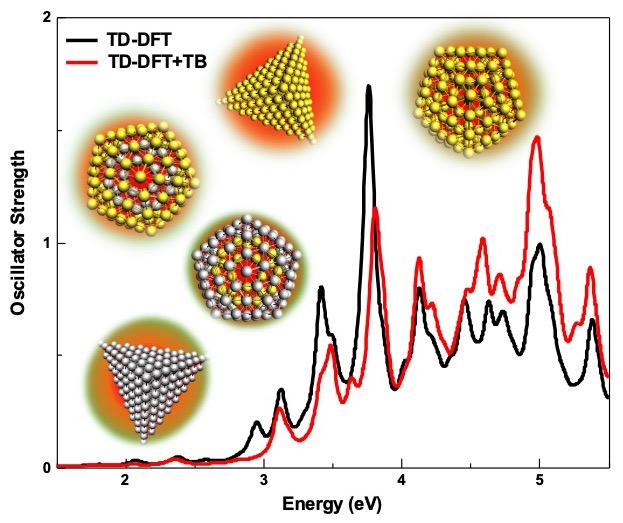Fast & efficient plasmonic excitations in metallic nanoparticles
The great potential of employing tight-binding approximations after a regular DFT ground state calculation has been demonstrated in a recent paper. With the TD-DFT+TB approach (see thesis by Robert Rüger), plasmon resonances in large silver, gold, and mixed silver-gold nanoclusters are obtained at a fraction of the time of the full TD-DFT calculation.

The TD-DFT+TB does not need an explicit parametrization, in contrast to a full tight-binding approach (TDDFTB). Furthermore, in contrast to the minimal basis sets used in DFTB, the TD-DFT+TB approach is based on ground state orbitals from DFT. Therefore, TD-DFT+TB can access a much wider range of excitations, including the plasmonic ones characteristic for metallic nanoparticles.
This work forms part of collaboration between the groups of Jamshidi and Visscher. The TD-DFT+TB approach is available in ADF2016 and later versions. See the manual or example input files for the Ag and Au nanoparticles.
See also: Very fast (chir)optical spectra of metal nanoparticles with POLTDDFT
Narges Asadi-Aghbolaghi, Robert Rüger, Zahra Jamshidi, Lucas Visscher, TD-DFT+TB: An Efficient and Fast Approach for Quantum Plasmonic Excitations, J. Phys. Chem. C (2020).
Key conceptsADF DFTB nanoscience plasmon spectroscopy TDDFT UV/VIS